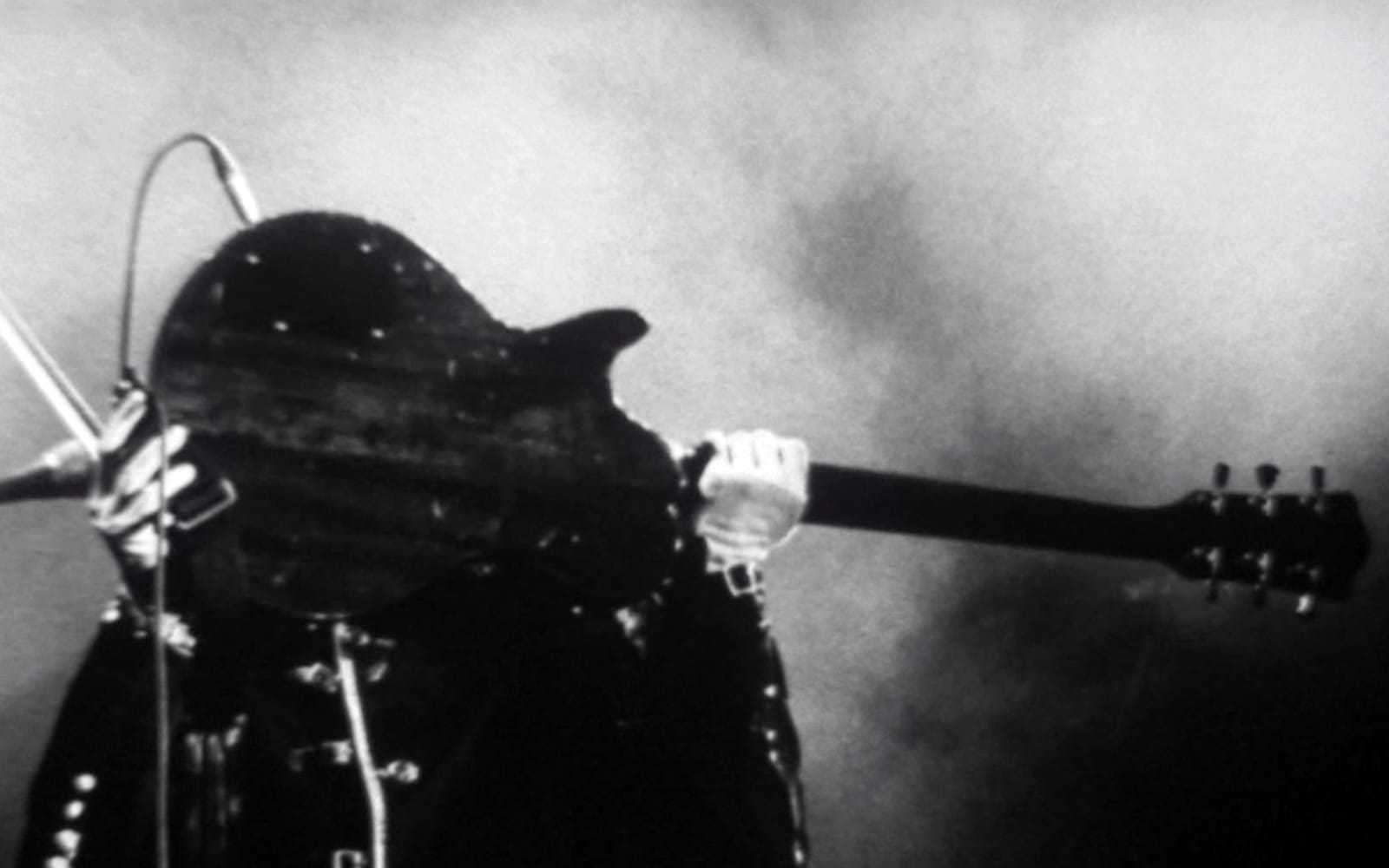Inni by Vincent Morisset (Review)

You could call Sigur Rós’ Inni a “concert film” but that’s a bit of a misnomer. Yes, the 74 minute movie consists primarily of footage culled from the band’s performances at London’s Alexandra Palace in 2008, interspersed with snippets of the band’s early performances, awkward interviews, and various antics. However, unlike many concert movies, there’s no sense of narrative — there’s no attempt to tell a story here (e.g., comparing Sigur Rós where they are now as a global post-rock phenomena with those gangly kids from the mid ’90s). Not even the concert footage follows a consistent path, as audio and video from obviously different parts of the performances are occasionally played off one another.
The result is a film that can be disorienting, but nevertheless beautiful from a purely sensory perspective thanks to its aesthetic: a blend of high contrast black-and-white cinematography, abstract imagery, skewed framing (at times, mic stands and the embroidery on frontman Jónsi Birgisson’s jacket feature more prominently than the band members themselves), and constantly shifting depths of field. And perhaps that’s really the point here, to convey, in a very abstract way, the delirious sensation of experiencing Sigur Rós in concert. And, having seen Sigur Rós live on three different occasions, I’d have to say that the film succeeds in that regard more often than not.
The film features eight songs plus a new piece titled “Lúppulagið” that plays during the end credits. The songs come from nearly every point in the band’s career, from 1999’s Ágætis byrjun to 2008’s Með suð í eyrum við spilum endalaust. It’s all uniformly lovely, though nothing that will be either revelatory for Sigur Rós fans or convincing for anyone who isn’t a fan by now (which, frankly, is the movie’s greatest weakness). The film’s visual aesthetic works best on those songs for which the band is most famous, thundering epics such as “Ný batterí,” “Sæglópur,” and “Popplagið” that feature Birgisson’s choirboy falsetto ringing out against massive walls of shoegazer guitars, shimmering pianos and keys, and torrential drums.
Here, when the band’s sturm und drang is at its highest, director Vincent Morisset lets his stark visual style run amok, resulting in a barrage of strobing lights, blurred visages, and psychedelic imagery. This is especially true during “Popplagið,” the movie’s final song. And what a finale! The song ends in a crescendo of wailing guitars and crashing drums that is one of the most cathartic moments in the band’s oeuvre. Morisset’s cameras capture the band awash in light and confetti, with Jónsi wailing into the microphone and thrashing his bowed guitar, and for a moment, the band appears to be dissolving before our very eyes. Morisset’s extreme, even experimental style proves to be the perfect visual counterpart for such a beautiful, staggering sonic onslaught.
There was a time when Sigur Rós was the Most Important Band in the world for me — a rather turbulent time during which their music became a frequent place of calm and beauty. For various reasons, though, their music became less “important” to me and indeed, I’ve found it difficult in recent years to listen to albums like Ágætis byrjun and () for fear of revisiting that turbulence, of remembering too many dark nights and soured relationships. So perhaps the highest compliment I can pay Inni is that it made me want to pull those Sigur Rós albums off the shelves and try to revisit their songs with a new frame of mind in place.

This entry was originally published on Filmwell on .